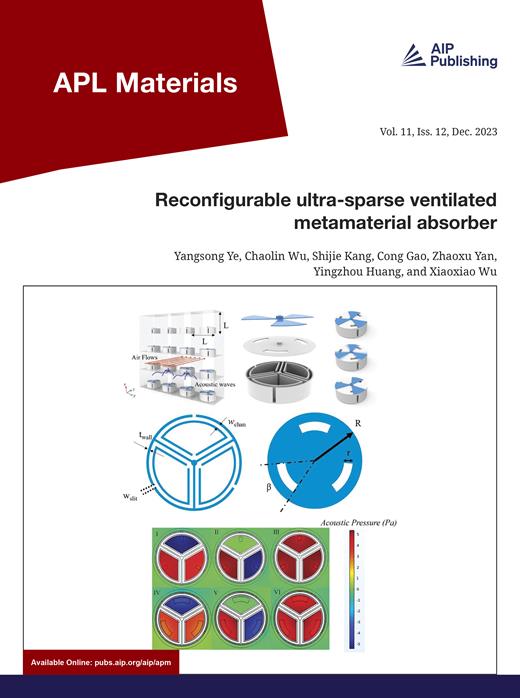用于磁场放大的微观磁性元表面的尺寸交叉
IF 5.3
2区 材料科学
Q2 MATERIALS SCIENCE, MULTIDISCIPLINARY
引用次数: 0
摘要
最近,应用于低频磁性系统的变换光学已被用于设计具有卓越性能的磁场聚能器和隐形器。虽然这一成果已在大块三维宏观结构中得到了充分的理论和实验证明,但这些器件在低尺寸下的性能仍然是一个未决问题。在这项工作中,我们用数值方法研究了磁性超材料场聚光器增益在轴向尺寸逐渐缩小时的非单调演化。特别是,我们发现在平面结构中,二磁元件的作用变得微不足道,而顺磁元件则提高了磁场通道效率。通过跟踪超导体-铁磁体聚光器在超导转变过程中的增益,我们在实验中进一步证明了这一点。有趣的是,对于二磁花瓣在聚光增益中发挥重要作用的厚度,它们还有助于减少聚光器的杂散磁场,从而限制外部磁场的扰动(隐形)。我们的发现为设计低维磁场聚能器提供了路线图,并设定了明确的几何限制。本文章由计算机程序翻译,如有差异,请以英文原文为准。
Dimensional crossover of microscopic magnetic metasurfaces for magnetic field amplification
Transformation optics applied to low frequency magnetic systems have been recently implemented to design magnetic field concentrators and cloaks with superior performance. Although this achievement has been amply demonstrated theoretically and experimentally in bulk 3D macrostructures, the performance of these devices at low dimensions remains an open question. In this work, we numerically investigate the non-monotonic evolution of the gain of a magnetic metamaterial field concentrator as the axial dimension is progressively shrunk. In particular, we show that in planar structures, the role played by the diamagnetic components becomes negligible, whereas the paramagnetic elements increase their magnetic field channeling efficiency. This is further demonstrated experimentally by tracking the gain of superconductor-ferromagnet concentrators through the superconducting transition. Interestingly, for thicknesses where the diamagnetic petals play an important role in the concentration gain, they also help to reduce the stray field of the concentrator, thus limiting the perturbation of the external field (invisibility). Our findings establish a roadmap and set clear geometrical limits for designing low dimensional magnetic field concentrators.
求助全文
通过发布文献求助,成功后即可免费获取论文全文。
去求助
来源期刊

APL Materials
NANOSCIENCE & NANOTECHNOLOGYMATERIALS SCIE-MATERIALS SCIENCE, MULTIDISCIPLINARY
CiteScore
9.60
自引率
3.30%
发文量
199
审稿时长
2 months
期刊介绍:
APL Materials features original, experimental research on significant topical issues within the field of materials science. In order to highlight research at the forefront of materials science, emphasis is given to the quality and timeliness of the work. The journal considers theory or calculation when the work is particularly timely and relevant to applications.
In addition to regular articles, the journal also publishes Special Topics, which report on cutting-edge areas in materials science, such as Perovskite Solar Cells, 2D Materials, and Beyond Lithium Ion Batteries.
 求助内容:
求助内容: 应助结果提醒方式:
应助结果提醒方式:


